Posts Tagged ‘Gridiron Glory’


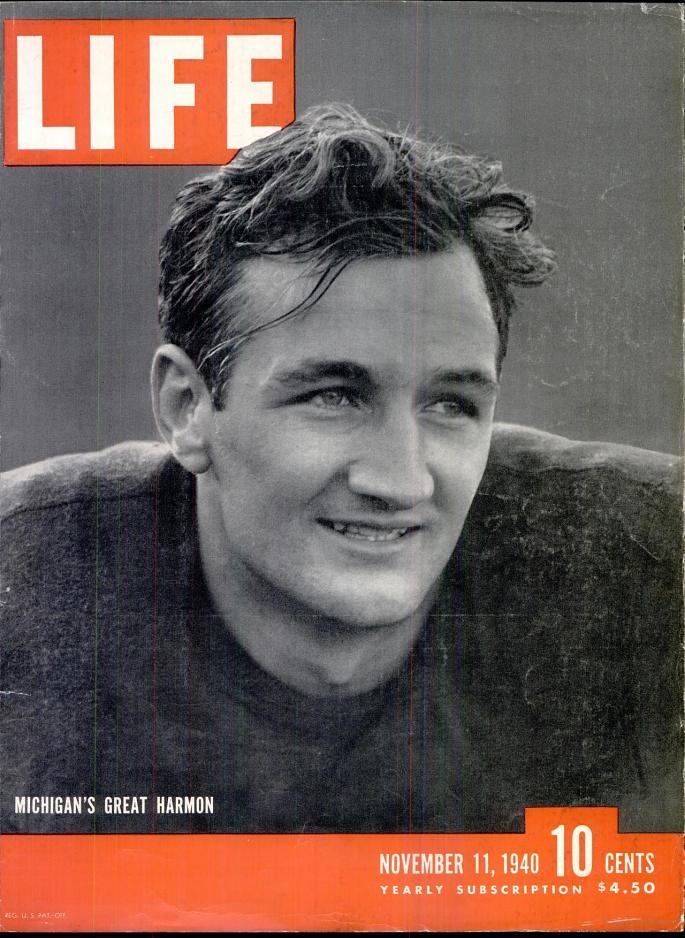
April 10, 1943 – Former all-America tailback at the University of Michigan and Heisman Trophy winner, Tom Harmon (US Army Air Corps) was the only member of his crew to survive a crash over Suriname due to weather conditions.
More About Tom Harmon –
Excerpt from Tom Harmon’s Obituary, The New York Times, March 17, 1990
Twice during World War II he was reported missing in action. In April 1943 he crashed into the jungles of Dutch Guiana, which is now Suriname, and marched alone through swamps and rain forests four days before he was rescued by natives.
Later that year, he bailed out of his P-38 fighter plane over China when it was shot down in an air fight. When he reached the ground, there were bullet holes in his parachute, and he pretended he was dead to discourage the enemy pilots from further attacks. He was smuggled back through Japanese-held territory to an American base by friendly Chinese bands.
When Harmon married Elyse Knox, an actress, on Aug. 26, 1944, the bride used the white silk and white cords from his parachute in her wedding gown.
After the war, Harmon received a $7,000 tax bill for earnings on the movie he had made in 1941. He accepted a $20,000-a-year offer from the Los Angeles Rams football team and performed for them through two unimpressive seasons. Wartime leg injuries robbed him of his former speed and power.
After ending his playing career, Harmon spent the rest of his life as a sports broadcaster in radio and television, based mainly in Los Angeles. In 1974, he joined the Hughes Television Network as a sports director, hired to coordinate sports programming and to serve as a commentator at major golf tournaments.
”Sports broadcasting was the only job I ever wanted,” he said. ”It was the thing I loved because it put me among people I knew and wanted to be with.”
The Michigan sports blog MGOBLOG also credits Harmon as the man who “made NCIS possible by fathering son, Mark.”
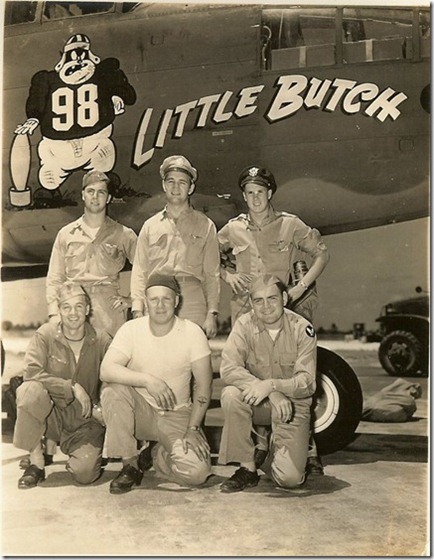
Tom Harmon (top row, center) and crew at Atkinson Field




NFL Teams Take Drastic Measures Due to Manpower Shortage
As World War II siphoned the ranks of the NFL, a severe manpower shortage emerged. In 1943, the shortage was so severe the league changed its rules to allow for free substitution. The player shortage forced the Cleveland Rams to suspend play for the 1943 season, while the Pittsburg Steelers and Philadelphia Eagles agreed to merge. In 1944, the Steelers merged with the Chicago Cardinals. 
Program for the October 9, 1943 game between the Eagles-Steelers and the Giants in Philadelphia, PA.




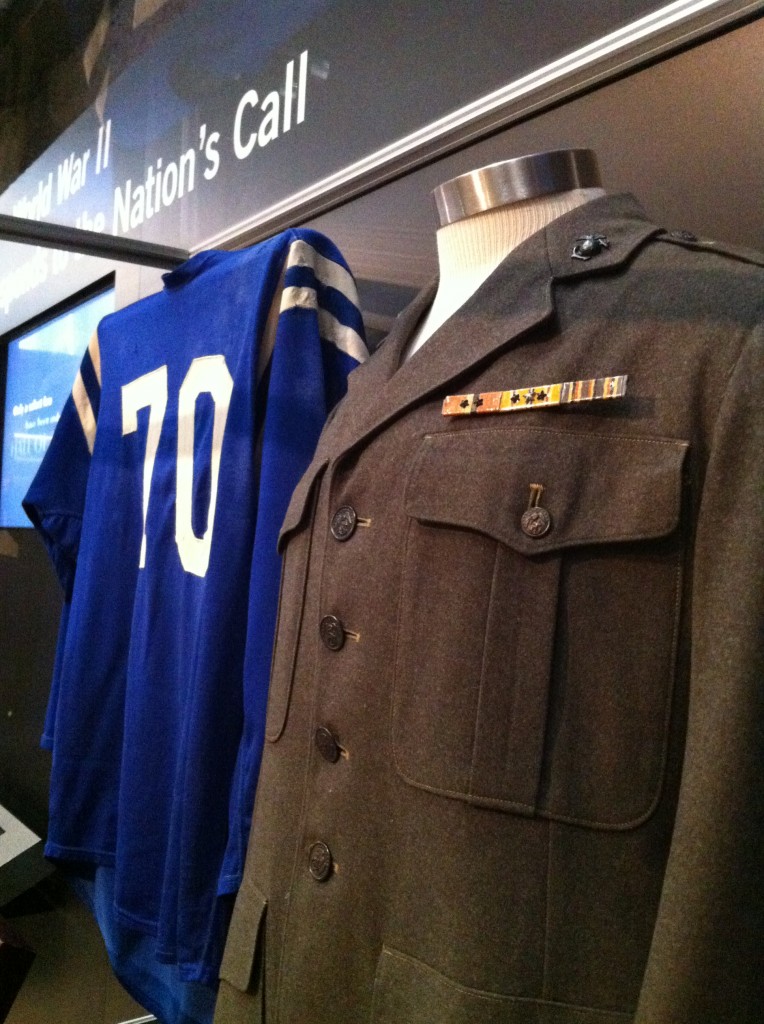
Currently on display at The National WWII Museum, Donovan’s Number 70 Colts jersey and Marine Corps jacket honor the life of one of the oldest living professional football players.
In 1943, Hall of Fame defensive tackle, Art Donovan, put his college and pro football careers on hold to serve in World War II. Enrolled in Notre Dame, Donovan postponed college, opting instead to enlist in the US Marine Corps. He was later assigned as part of Marine naval detachment to a gunnery crew on the aircraft carrier USS San Jacinto, and first saw action during the Marianas Islands campaign. Following service on the San Jacinto, Donovan volunteered to serve as a machine gunner and saw action on Okinawa, After Okinawa, he was reassigned to the 3rd Marine Division on Guam.
After the war, Donovan attended his final three years at Boston College, starting as a two-way tackle the entire time. He was a 26-year old rookie when he joined the Baltimore Colts in 1950. The Colts folded after one season, and Art moved to the New York Yanks in 1951, then played for the Dallas Texans in 1952.
In 1953, the well-traveled Donovan returned to Baltimore to play for the new Colts franchise and, as the Colts developed into a championship team, Donovan developed into one of the best defensive tackles in league history.
The 6-foot-3, 265-pound defensive tackle was smart and quick, able both to rush the passer and to move laterally to stop running plays. Donovan was also one of the most popular players in the league. He was an All-NFL selection in 1954, 1955, 1956, 1957, and 1958. In addition, he played in five straight Pro Bowls.
The Baltimore Colts’ great title teams of 1958 and 1959 featured a terrific defensive line, with future Hall of Fame defensive end Gino Marchetti, Don Joyce, “Big Daddy” Lipscomb, and Donovan, who by then had become the complete player. He was equally adept at rushing the passer, reading keys, closing off the middle, and splitting double team blocks. He had the reputation of being almost impossible to trap.
As great of a contributor as he was on the field, many feel he was just as valuable to the Colts as a morale builder, with his sharp wit and contagious laughter. The Colts retired his jersey, Number 70, in 1962 when he left professional football after 12 seasons in the NFL. In 1962, he also became the first Colts player elected to the Pro Football Hall of Fame.
On set of a video piece for the 2011 Super Bowl, Donovan was flanked by active-duty Marines. After spending most of the shoot making his uniformed co-stars laugh in a serious moment he told the Marines, ‘‘People think the [NFL] players and owners making all that money are heroes. You are my heroes — thank you.”
Plan your visit to see Gridiron Glory before it closes at The National WWII Museum on May 5, 2013.
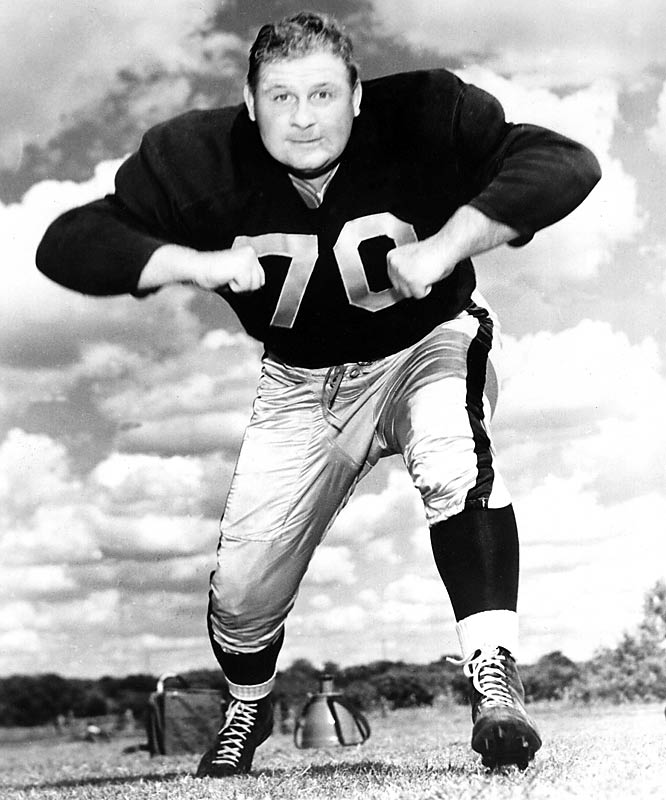
Art Donovan



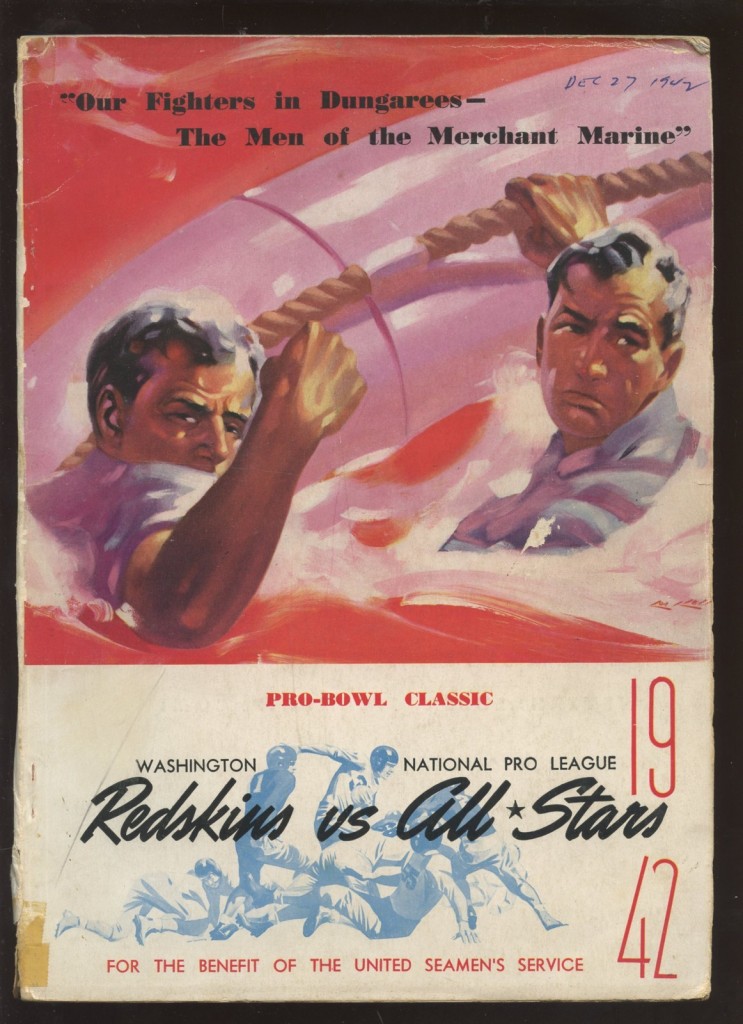
On December 13, 1942, the Eastern Division champion Washington Redskins prevailed over the Western Division and defending NFL champion Chicago Bears. In front of a home-crowd of over 36,000 at Griffith Park in Washington D.C., the Redskins captured the ’42 NFL Championship, defeating the Bears by a score of 14 to 6; ending both their reign as champions and an otherwise perfect season. This victory for the Redskins was redemption for the franchise which – two years prior – had been embarrassed by the Chicago Bears in the 1940 NFL Championship Game in what remains the most lopsided contest in NFL history (73 – 0).
However, unlike today’s Super Bowl or Pro Bowl system, the winners of the 1942 NFL Championship Game did not go home to ticker-tape parades in celebration: they went on to face a team of all-star players hand-picked from teams from across the league in the NFL All-Star Game. On this date, 70 years ago, at Shibe Park in Philadelphia, Pennsylvania, the newly-crowned Washington Redskins would be defeated by the All-Star squad, lead by Chicago Bears coach Hunk Anderson. The 1942 meeting would be the final All-Star Game of the decade, making way for the debut of the more familiar Pro Bowl system in 1951. Proceeds of the 1942 All-Star Game went to benefit the United Seamen’s Service.
On view from January 26, 2013 – May 5, 2013, The National WWII Museum will host Gridiron Glory: The Best of the Pro Football Hall of Fame. Organized by the Pro Football Hall of Fame, Gridiron Glory presents a panoramic view of the story of professional football — from its humble beginnings in the late 19th century to the cultural phenomenon it is today — and brings together an extraordinary collection of artifacts, while creating an unforgettable interactive experience. The Hall of Fame has partnered with NFL Films in creating the audio and video for this exhibit.
This post by Collin Makamson, Red Ball Express Coordinator @ The National WWII Museum












